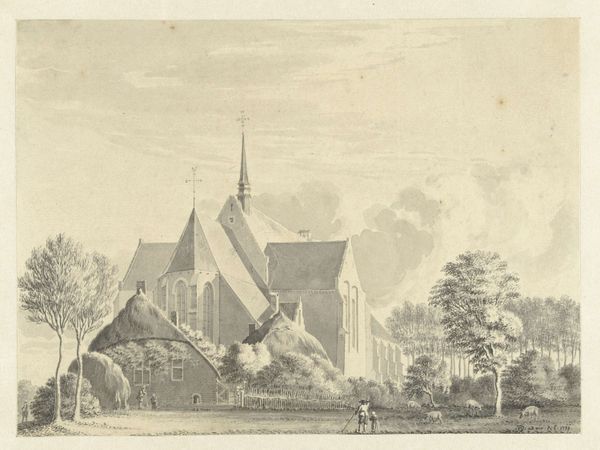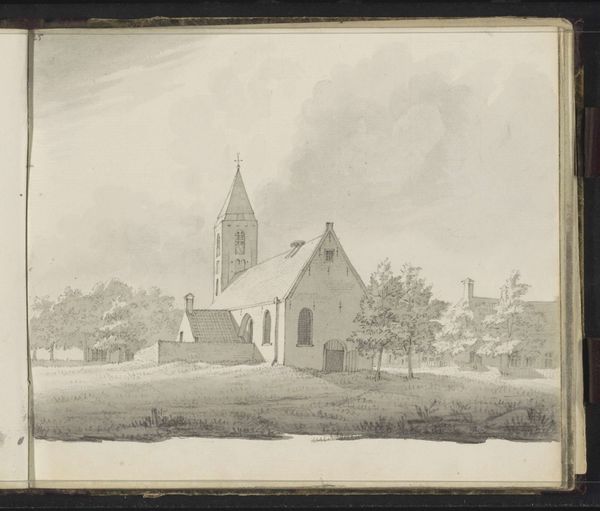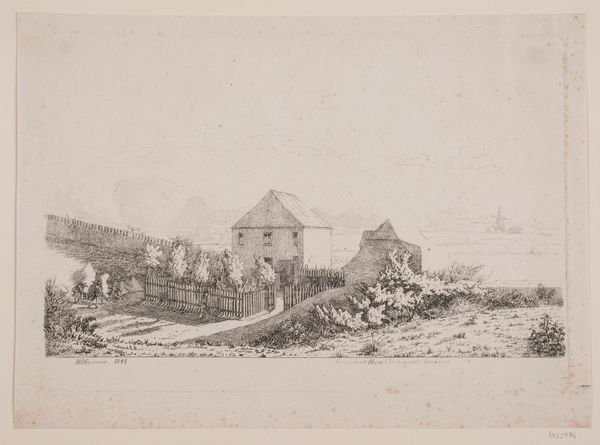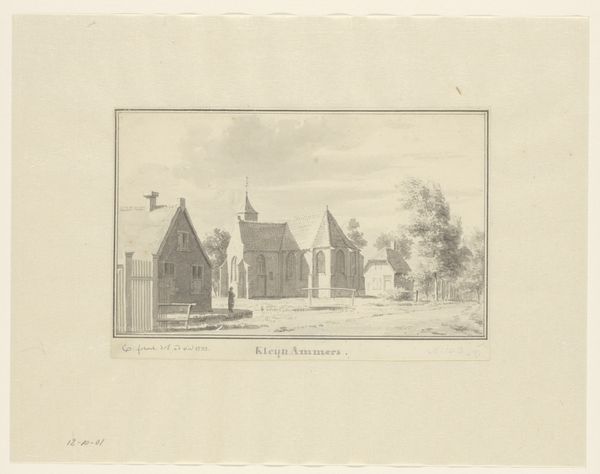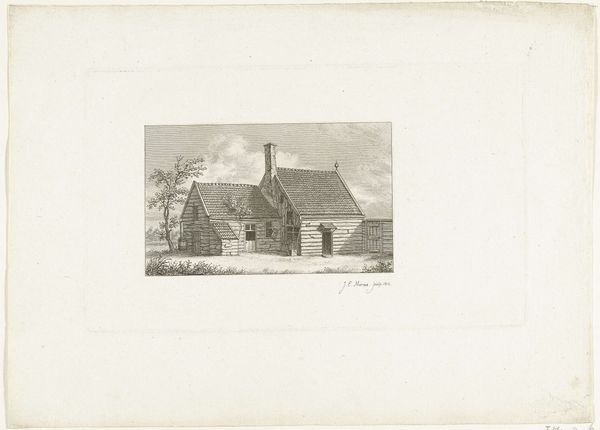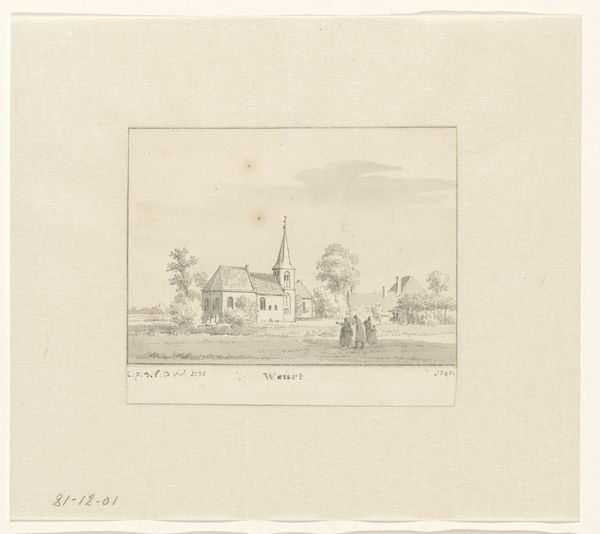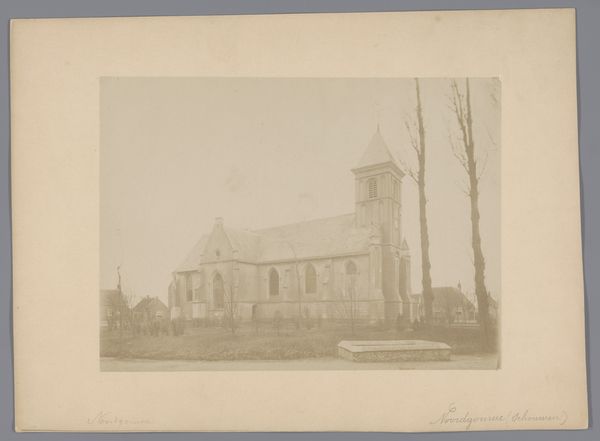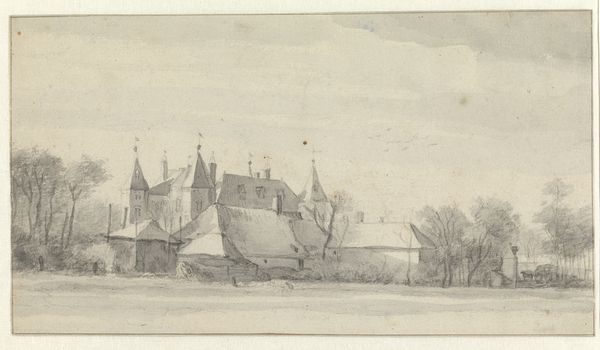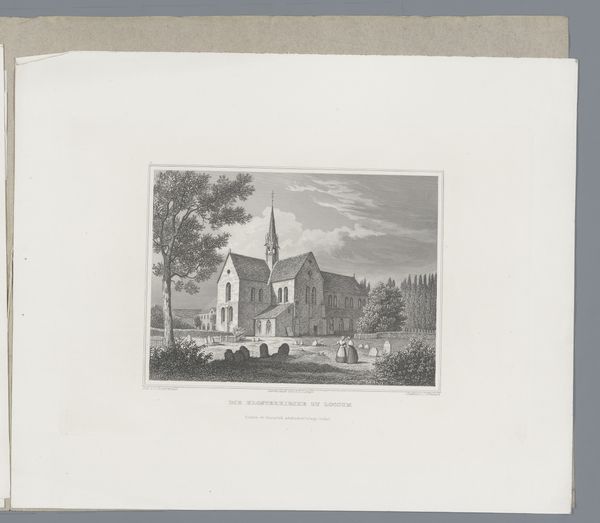
Gezicht op Nieuwlicht, klooster van de kartuizers c. 1842 - 1880
0:00
0:00
print, engraving
# print
#
landscape
#
19th century
#
cityscape
#
engraving
Dimensions: height 160 mm, width 195 mm
Copyright: Rijks Museum: Open Domain
Pieter Wilhelmus van de Weijer created this print of the Carthusian monastery, Nieuwlicht, using a technique that allows for the mass production of images. Note the fine lines and subtle gradations of tone. These were achieved through etching, a printmaking process by which lines are incised into a metal plate with acid. The plate is then inked and pressed onto paper. This is a departure from drawing directly from nature, as the image is created through a chemical and mechanical process. The act of etching is a craft, demanding skilled labor and specialized knowledge. It also reflects the increasing industrialization of art production in the 19th century, and a shift away from unique handmade artworks to reproducible images that could be widely distributed. By understanding the materials and processes involved in creating this print, we gain insight into the changing social and economic conditions that shaped artistic production.
Comments
No comments
Be the first to comment and join the conversation on the ultimate creative platform.



